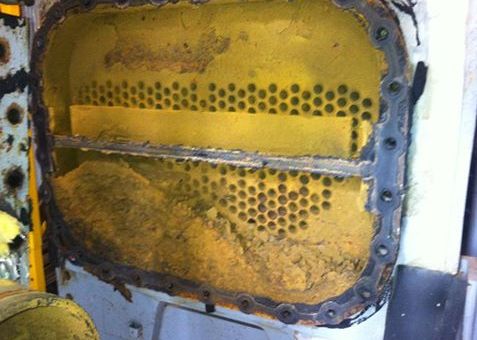Chiller System Annual Maintenance – Part One
(Photo Credit) Adam Hawkins, HVAC Instructor-Maysville Community Technical College-Montgomery Campus
Let’s face it, here in Central Florida we don’t have much of a winter. Even the cool weather that we have doesn’t last very long. For the most part that’s a good thing except that it doesn’t leave much of a window to perform necessary Annual Maintenance Tasks on your facility Chiller systems. Starting around mid-October through mid-March, Thermetrics Corporation personnel are usually extra busy overhauling large chillers, cleaning heat-exchanger tubes, retrofitting cooling towers and many other HVAC/Chiller-related tasks that can only be performed during the cooler weather. Prudent Chief Engineers and Plant Managers schedule chiller systems annual maintenance tasks during the cooler weather so that their Customers can enjoy the comfort of a reliable HVAC system throughout the hottest times of the year. What are some of the maintenance tasks that need to be scheduled during cooler weather?
Airside
NASA uses large volumes of pure nitrogen gas, flowing through enclosed air handlers to safely cool the payload sections of their rockets so as to displace any oxidizing gas and maintain a pure environment. If our air handling systems were enclosed and N2 was used to purge all corrosive and explosive gasses, we could keep pristine heat exchange coils and interior surfaces free of microbial life. Of course humans breathe N2, but without the 21% of oxygen in regular air we wouldn’t survive. Consequently, the chilled water air handlers that condition our buildings will not remain pristine or microbe-free. These air handling systems should be thoroughly cleaned to maintain IAQ (Indoor Air Quality) as well as efficiently absorb excess heat from the space being conditioned.
Chilled Water Loop
Often ignored, ill-maintained chilled water loops can lead to serious fouling problems with the chiller cooler heat-exchanger, plugged air side coils, pipe corrosion and tube pitting severe enough to leak. If left untreated and untested, poor chilled water chemistry can lead to metal corrosion which is the main cause of failure in closed loop systems. Poor chemistry can also lead to coarse, sandy-like crystals detrimental to valve seats, pump seals, etc. It can allow certain types of organic compounds to thrive, fouling heat-exchange surfaces in chiller coolers and the inside surfaces of air handling cooling coils. If the chilled water loop has glycol, such as systems that build ice, it is also critical that the glycol levels are tested at regular intervals to ensure the freeze-point is maintained. Properly maintained, the chilled water loop will transmit the heat energy from the HVAC system to the chiller.
Chilled Loop – Annual Maintenance Tasks
1. -Loop test indicating high conductivity
a. Flush system to reduce dissolved solids. Restore chemical as needed.
b. Chemistry should be tested and appropriate additives applied to prevent corrosion and organics.
2. -Closed chill-systems which cannot maintain correct chemistry are leaking excessively.
a. Leak test loop.
b. Check make-up pressure regulator
c. Check relief system
3. -Test glycol levels (where applicable) to ensure freeze-point meets system design.
4. -Initiate a chilled loop test program to monitor at regular intervals throughout the year

